Why Sustainability Measures are Taking Over Housing and Transportation in Guatemala City
Guatemala City is identified with multiple neighborhood zones that help coordinate the general layout for both visitors and residents alike. These zones spiral out, starting with the city’s oldest quarter which is adjacent to the bustling government corridor. The zones then radiate out and more are added as the city expands over time. Sharing the border of zones eleven and twelve is the very popular and consistently expanding Transmetro. Designed using existing rights-of-way, Transmetro lanes are set aside primarily for double length, accordion, articulated buses and are also used for emergency vehicles. Rarely is it when the busses are not packed beyond capacity; each are controlled with turnstile gates and stations where fare-paying citizens navigate.
Transmetro Estacion Mariscal is one of these stops in the Zone 11 district of Guatemala City. Traditionally considered a strong, working class neighborhood, Zone 11 is also seeing its neighborhood transformed, not so much with gentrification, but rather, it is with sheer scale of high density housing development. As the nearby Embassy Row and Zone 14 neighborhoods become stratospherically priced, investors are realizing they can capitalize on the growing desire to build elsewhere as demographics continue to flood Guatemala City. Directly across the western side of La Aurora airport are Zones 11 and zone 12.
These two zones are poised to become the new emerging hotspot for expansive growth in the residential housing sector. Eventually, mid-rise buildings will parallel both sides of the airport until air traffic becomes so congested that a second airport would be deemed necessary. Logistical planning to create a new airport would most likely parallel that of San Salvador, El Salvador that created a new airport about 45 minutes west of their capital. Such an endeavor is highly feasible, yet many years out for the country of Guatemala.
There are several gleaming, newly built residential towers named for the nearby Transmetro station; Mariscal Torres is the name of a new condominium midrise. Illustrative of several primary infrastructure projects that are currently under construction within a three-block radius, these apartments/condos have all the luxuries that are embedded not just in Zone 14 or the higher-end Paseo Cayala, but on par with its American city counterparts. Beneath Mariscal Torres are two floors of secured underground parking, storage space for each unit and comes with a separate entry gate accessibility key card.
Above ground is where the real design shines. Local architectural firms have a very talented hand incorporating hidden infrastructural details as well as those in plain view. Mariscal Torres occupies what used to be a single-story home with a courtyard. Sitting on top of an aquifer that also encompasses much of the city, the building itself was built with sustainability in mind; amongst them is its own filtered source for both potable and non-potable water that is also reused for secondary purposes. With an eye towards sustainable construction practice, Mariscal Torres is already breaking ground on four additional projects, all in the same area and close to various Transmetro stops.
Much of the city sits on top of a sedimentary layer of weak limestone. Carving into the ground, securing the parameter and commencing foundational support and building can be problematic. Fortunately, with increased recognition that the city is consistently exposed to seismic activity from both earthquakes and the nearby volcanoes, there are now geological building standards. Today, many new structures have in place, codified language that solidifies new multi-story housing to withstand moderate and large-scale earthquakes.
As one enters Mariscal Torres, there is a spacious concierge, complete with the same key-card lock as the garage, to gain entry. The lobby area lets in much of the light from outside; with polished floors, resident use of offices on the main floor; gym, spa, cantina and infinity swimming pool complete with a kid’s play area on the terrace floor. Individual units house single individuals to families and there is a sense of community within the building itself. Services, shopping malls and banking are nearby; most are within walking distance or using the Transmetro line.
Mariscal Torres led the way with initial trepidation on the part of investors. The initial question originally begets the inquiry “if new buyers would be willing to look outside of conventional, more established housing zones” was one of many issues debated amongst investors. The central question focused if these same prospective buyers be willing to reconsider other areas of the city that weren’t necessarily the name-brand, best areas of the city; it appears the question was timely and relevant.
Before even breaking ground on the new construction project, reservation deposits were taken and soon, initial building was underway. As buyers realized the area was relatively safe with easy access to surface roads and Transmetro (There are no European style freeways that split the city. As a result, the city continues to blur the lines where one zone ends and a new one begins), the adage of ‘location, location, location’ played nicely in favor to developers and buyers.
Increasingly (as it is nearly sold out), Mariscal Torres houses many of the growing number of millennial-class tech workers, who then take the Transmetro, switching busses and commuting to the emerging tech sector of Zone Four. There are also international residences from points beyond Guatemala living in these neighborhood towers and aside from attractive price-points, the building itself continues to exemplify investors pouring money into new areas. The only fear is pricing local residents out of their own neighborhoods, something challenged in all areas around the world.


